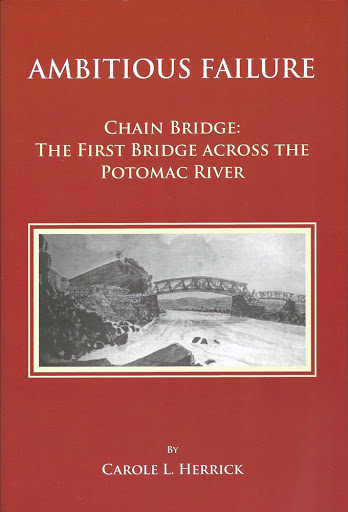This is the story of Chain Bridge. The first bridge that spanned the Potomac River was a wooden toll bridge built in 1797 just below Little Falls. Over the decades eight bridges have spanned the river at that site. It was the third bridge, a chain suspension bridge, from which Chain Bridge received its name. Georgetown merchants were hopeful that the bridge would divert Virginia’s inland trade away from their commercial competitor, Alexandria, and the farmers and planters would bring their goods into Georgetown.
It’s the story of investors, and later the government, all of whom continually poured money into a bridge. Georgetown businessmen believed their economic survival depended on maintaining this bridge above their town. They feared being swallowed up by the expanding Federal City. In the long run, Georgetown did lose its battle for survival when, under the District Territorial Act of 1871, the separate municipalities within the District of Columbia were folded into a single entity. But the Chain Bridge survived; but at what cost? An ambitious failure?
Local author, Carole Herrick, lives in McLean, Virginia. She is a past president of the McLean Historical Society and is a member of the Fairfax County History Commission. Herrick co-chaired McLean & Great Falls Celebrate Virginia, 1607-2007, and served on the board of Fairfax 2007, two organizations that promoted the 400th anniversary of the founding of Jamestown. She co-chaired the “McLean Centennial Celebration” in 2010 and chaired “McLean Remembers the Civil War” the following year. She is the author of several other books ion local history, including “August 24, 1814: Washington in Flames” (also for sale here in the AHS online bookstore).
- Hardcover: 400 pages
- Publisher: Higher Education Publications, 2012
Every book you buy here on this website helps support the AHS mission to strengthen our community by improving the understanding of local history.







